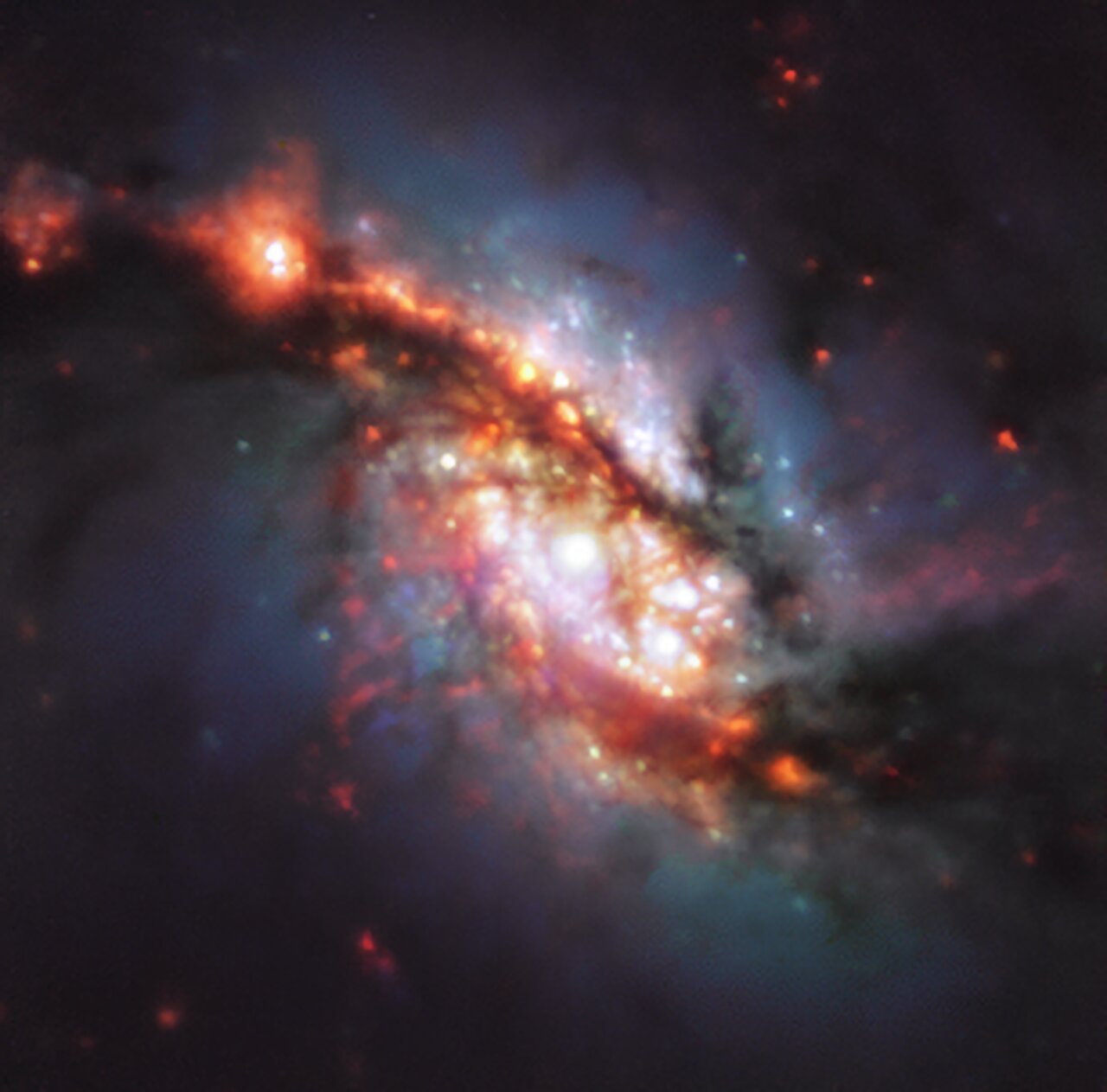The Cosmos with NGC 1365
The MUSE instrument on ESO’s Very Large Telescope (VLT) in Chile has observed NGC 1365, a double-barred spiral galaxy located about 56 million light-years away in the Fornax galaxy cluster, allowing us to construct this spectacular colour image. The galaxy is also known as the Great Barred Spiral Galaxy, after its two central bar-shaped structures, made up of stars.
The two bars of NGC 1365 are a rare phenomenon and are thought to have originated by the combined effects of galaxy rotation and the complex dynamics of the stars. Its largest bar of stars, too large for its structure to be visible in this image, connects its outer spiral arms to its centre. What we can see is the much smaller second bar of stars, nestled within the main bar. It is likely this secondary bar acts independently of the main bar, rotating more rapidly than the rest of the galaxy.
Standing for Multi-Unit Spectroscopic Explorer, the MUSE instrument captured this image in optical and infrared light, showing the gas and dust in the central region of the galaxy. Installed on Yepun, one of the four 8.2-metre telescopes that make up the VLT, the capabilities of this instrument have allowed for some of the most comprehensive and detailed studies of our Universe to date, including surveys of distant galaxies, supermassive black holes and even the source of gravitational waves.
